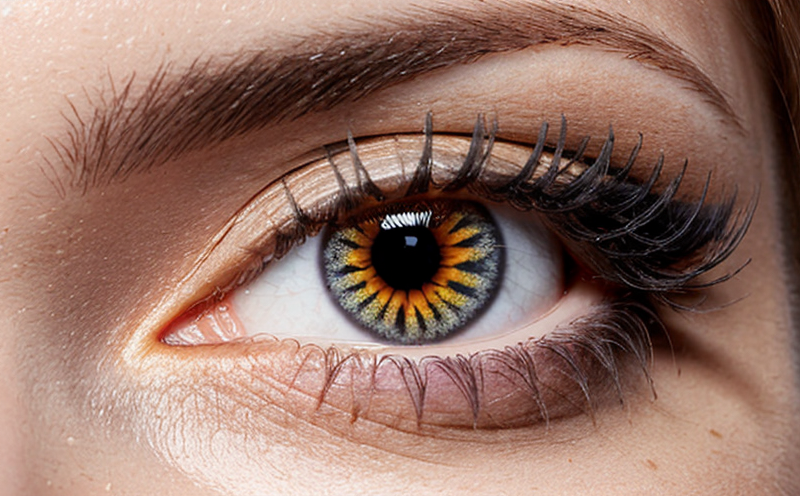Ocular Irritation Testing in Natural Eye Cosmetics
The testing of natural eye cosmetics is a critical component in ensuring consumer safety and compliance with international standards. As quality managers, R&D engineers, and procurement officers, you are aware that the eyes are one of the most sensitive parts of the body. Therefore, any cosmetic product intended for use around or in the eyes must undergo rigorous testing to ensure it does not cause irritation or damage.
In this context, ocular irritation testing focuses on evaluating the potential harmful effects of a natural eye cosmetic formulation on the cornea and conjunctiva when it comes into direct contact with these sensitive areas. This type of testing is especially important given the increasing demand for natural and organic products, which often differ significantly from synthetic counterparts in terms of chemical composition.
The ISO 10993-10 standard provides a framework for assessing whether a cosmetic product can be used safely on the eye. This includes evaluating various aspects such as pH levels, microbial contamination, and allergenicity. However, ocular irritation testing specifically aims to identify any potential issues related to direct contact with the eyes.
The tests are conducted using standardized procedures that simulate real-world conditions under which consumers might use a product. These can include applying the substance for extended periods or repeatedly over several days. The results help manufacturers make informed decisions about ingredient selection, formulation adjustments, and labeling requirements. Proper ocular irritation testing ensures compliance with regulations like those set forth by the FDA and other global bodies.
To perform these tests effectively, laboratories must have access to advanced equipment capable of simulating eye conditions accurately. This typically involves using specialized chambers designed to mimic ocular environments while allowing for precise measurement of physiological responses like corneal opacity or conjunctival hyperemia (redness).
Scope and Methodology
| Parameter | Description |
|---|---|
| Test Specimen | The cosmetic product being evaluated, typically in its final formulated state. |
| Preparation Time | 1-2 days to allow the product to reach room temperature and ensure consistency throughout testing. |
| Test Duration | Varies depending on the specific ISO protocol being followed, but generally ranges from 4 hours to several days. |
| Data Collection | Includes measurements of corneal opacity using a Slit Lamp microscope and assessments of conjunctival hyperemia via direct observation or photography. |
The methodology follows the guidelines outlined in ISO 10993-10, which specifies detailed procedures for determining the ocular irritation potential of medical devices and related products. During this process, test subjects are exposed to the cosmetic formulation under controlled conditions that replicate typical usage scenarios.
A key aspect of ocular irritation testing is ensuring accurate data collection through consistent measurement techniques. Laboratories must adhere strictly to predefined protocols to minimize variability and ensure reliable results.
Benefits
Enhanced product safety, reducing risks associated with eye injuries or infections.
Increased consumer confidence due to adherence to stringent safety standards.
Potential reduction in recalls and legal disputes by identifying potential issues early in the development process.
Compliance with regulatory requirements, including those imposed by agencies like the FDA.
Improved reputation among consumers seeking natural or organic products.
Enhanced brand value through transparent communication regarding product safety.
Ocular irritation testing plays a crucial role in safeguarding both consumer health and brand integrity. By conducting thorough evaluations, manufacturers can ensure their products meet high standards of quality and are free from substances that could cause harm when used around or inside the eyes.
Competitive Advantage and Market Impact
Leadership in natural and organic product development ensures companies stay ahead of trends and consumer demands.
A proven track record for delivering safe, high-quality products can attract new customers and retain existing ones.
Meeting or exceeding regulatory expectations demonstrates a commitment to ethical practices, appealing to socially conscious consumers.
Innovative approaches in formulation that result from rigorous testing lead to unique product offerings that differentiate brands in the market.
By prioritizing ocular irritation testing, companies not only comply with legal requirements but also position themselves favorably within competitive landscapes. This proactive stance can drive sales growth and foster long-term relationships with consumers who value safety and transparency in their purchases.





